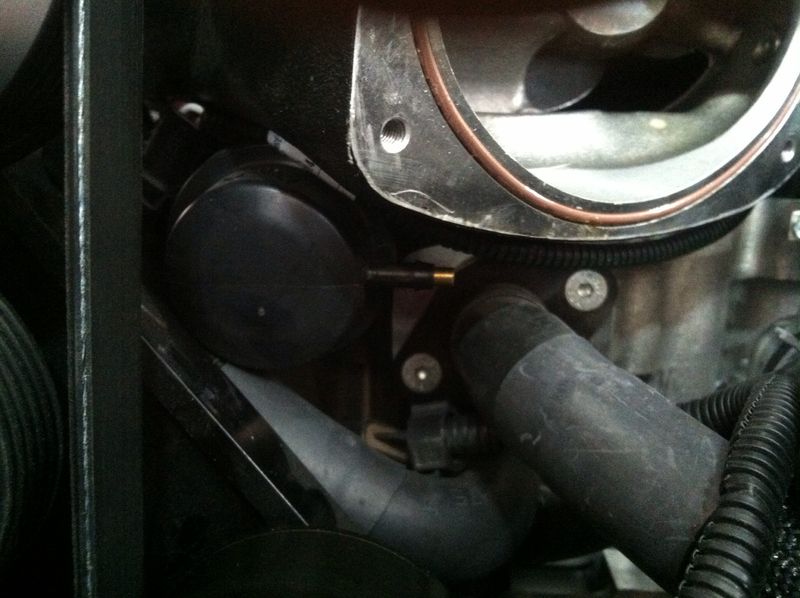Brilliant1
Member
- Thread starter
- #1
Well, as a few others have mentioned, Whipple is aware there is a "hiccup" or "hesitation" issue that is thought to be caused by the Bypass valve shutting too quickly when moving into boost from a vacuum.
I pleaded with the guys at Whipple and they decided to add me to the list of lucky beta testers.
They overnighted me a small box.
Inside was a instruction sheet with nice big pictures showing what was involved with the install.
It only took about an hour and would have gone much faster but I was working on straightening out some of my SC Coolant lines.
Anyway, I took the throttle body off easily with only 4 allen bolts.
Once off, I had reasonable access to the bypass valve.
I put the small brass fitting shown inside the bypass valve thus limiting flow from a AA down to about the size of a push pin hole.
I put it in the plastic inlet on the bypass valve firmly but gently. I then put the bypass hose over it and reinstalled the other end where the original was.
I went for a drive.
I knew immediately the issue was fixed! (almost completely)
90% of the hesitation is gone and I am VERY happy. If I had to live with it like this I would be glad to.
The better news is that I dont!
The rest of the issue is likely to be fixed by a new calibration that is currently under validation testing at Ford. As of now they hope to get the thumbs up from Ford and then make it available in about a month or two.
Anyway. I was lucky enough to be a Beta tester and they said it was ok to share the good news just be patient with them while they finalize the solution and know that it is well on its way!
Cheers!
:cheers:



I pleaded with the guys at Whipple and they decided to add me to the list of lucky beta testers.
They overnighted me a small box.
Inside was a instruction sheet with nice big pictures showing what was involved with the install.
It only took about an hour and would have gone much faster but I was working on straightening out some of my SC Coolant lines.
Anyway, I took the throttle body off easily with only 4 allen bolts.
Once off, I had reasonable access to the bypass valve.
I put the small brass fitting shown inside the bypass valve thus limiting flow from a AA down to about the size of a push pin hole.
I put it in the plastic inlet on the bypass valve firmly but gently. I then put the bypass hose over it and reinstalled the other end where the original was.
I went for a drive.
I knew immediately the issue was fixed! (almost completely)
90% of the hesitation is gone and I am VERY happy. If I had to live with it like this I would be glad to.
The better news is that I dont!
The rest of the issue is likely to be fixed by a new calibration that is currently under validation testing at Ford. As of now they hope to get the thumbs up from Ford and then make it available in about a month or two.
Anyway. I was lucky enough to be a Beta tester and they said it was ok to share the good news just be patient with them while they finalize the solution and know that it is well on its way!
Cheers!
:cheers:
Sponsored

